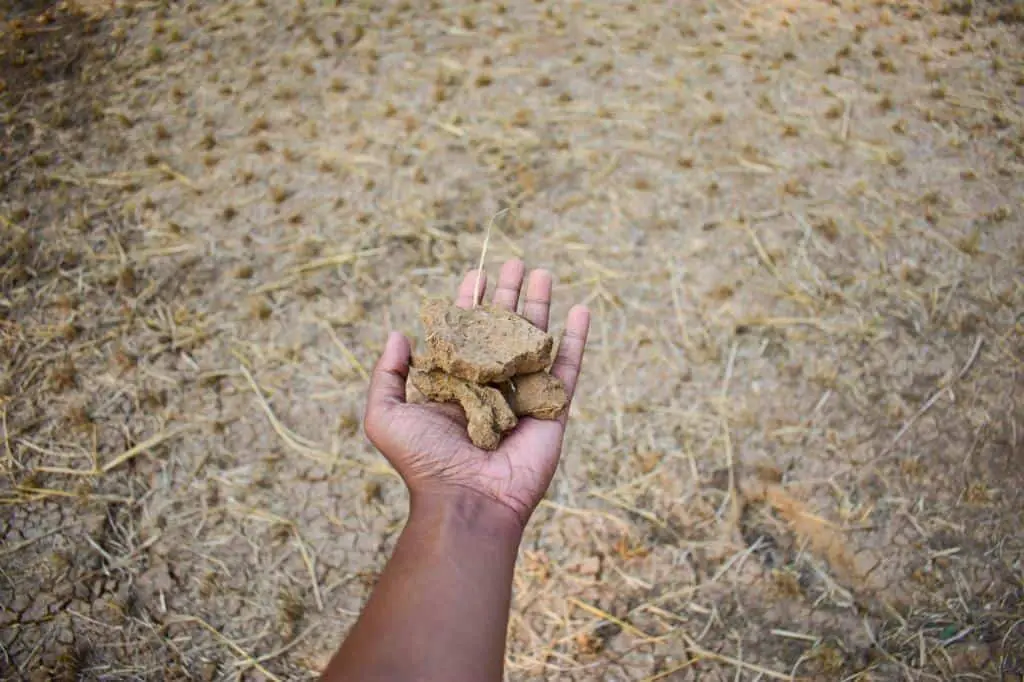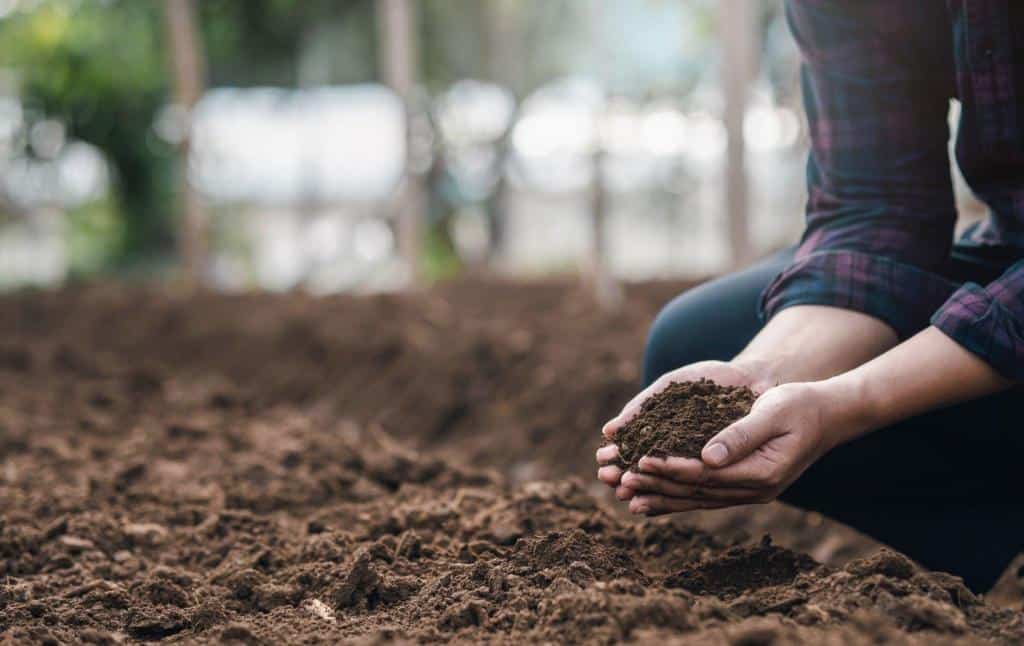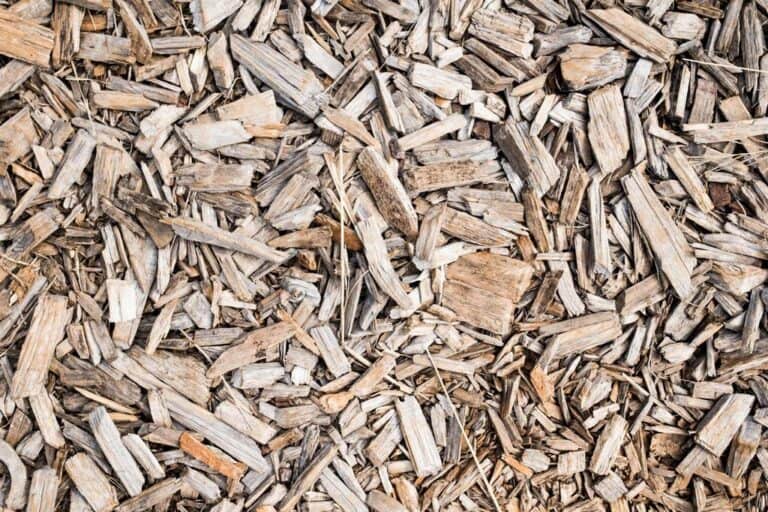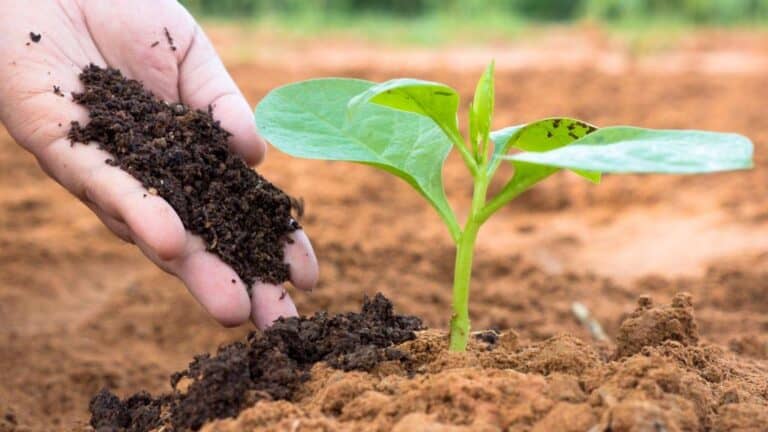Productive Soil vs. Fertile Soil: What’s the Difference?

Are you an aspiring gardener or an agriculture enthusiast looking to cultivate a thriving, bountiful garden? If so, you’ve likely come across the terms “productive soil” and “fertile soil” in your quest for green-thumb knowledge.
While these terms may seem interchangeable at first, there is a subtle but significant difference between them that can profoundly impact your gardening success. So, what sets productive soil apart from fertile soil?
Join us as we embark on a journey to unravel the mysteries of soil science and explore the dissimilarities between these two soil types. From nutrient content and water-holding capacity to pH levels and soil structure, we’ll delve into the distinct characteristics that distinguish productive soil from fertile soil.
Get ready to unearth the secrets of soil management practices and discover how to create the ideal environment for your plants to flourish. Let’s dive in and unlock the secrets of productive soil versus fertile soil!
Productive Soil
Productive soil refers to soil that is capable of sustaining healthy plant growth and producing abundant yields. It is characterized by its ability to provide the necessary nutrients, moisture, and support for plants to thrive. Productive soil is the result of careful soil management practices, including regular testing, amendment additions, and proper crop rotation.
Key Features of Productive Soil
- Nutrient-rich: Productive soil contains an optimal balance of essential nutrients required for plant growth, such as nitrogen, phosphorus, and potassium. These nutrients are often supplemented with organic or synthetic fertilizers to ensure optimal plant health.
- Good water-holding capacity: Productive soil retains an adequate amount of moisture to support plant growth. It has a balanced structure that allows water to penetrate easily, preventing excessive runoff while providing proper drainage.
- Suitable pH levels: The pH level of productive soil is within a range that is favorable for most plants. While different plants have varying pH preferences, productive soil usually falls within a slightly acidic to neutral range (pH 6 to 7).
- Proper soil structure: Productive soil has a crumbly texture that allows plant roots to penetrate easily. It is well-aerated, enabling roots to access oxygen and nutrients efficiently. This promotes root development and overall plant growth.
Soil Management Practices for Productive Soil
To maintain and enhance productive soil, several soil management practices are crucial:
- Regular soil testing: Periodic soil testing helps determine the nutrient content and pH level of the soil. This information guides the appropriate application of fertilizers and amendments to meet the specific needs of different plants.
- Amendment additions: Based on the results of soil testing, organic matter, such as compost or well-rotted cow manure, can be added to improve soil fertility and structure. Additionally, lime or sulfur may be applied to adjust the pH level if necessary.
- Crop rotation: Rotating crops helps prevent the depletion of specific nutrients and reduces the risk of pest and disease buildup in the soil. Different plant families have varying nutrient requirements, and rotation allows the soil to replenish and maintain its fertility over time.
Fertile Soil

Fertile soil, on the other hand, refers to soil that possesses a high natural capacity to support plant growth without the need for extensive amendments or interventions.
Fertile soil is often found in regions with favorable climatic conditions and naturally occurring nutrient-rich deposits. This type of soil is typically rich in organic matter, minerals, and beneficial microorganisms, allowing plants to thrive with minimal external inputs.
Read: Fertile Topsoil Benefit
Key Features of Fertile Soil
- Abundant organic matter: Fertile soil contains a high percentage of organic matter, such as decomposed plant material, humus, and beneficial microorganisms. Organic matter improves soil structure, enhances nutrient availability, and retains moisture, creating an ideal environment for plant growth.
- Natural nutrient balance: A natural nutrient balance can make fertile soil and make it easy for plants to grow. It often contains a variety of minerals and trace elements that are readily available to plants, eliminating the need for additional fertilization.
- Optimal moisture retention: Fertile soil has excellent water-holding capacity, allowing it to retain moisture for extended periods. This ensures a constant water supply to plants, even during dry spells or periods of limited rainfall.
- Diverse microbial activity: Fertile soil is teeming with beneficial microorganisms, including bacteria, fungi, and earthworms. These organisms play a vital role in breaking down organic matter, releasing nutrients, and improving soil structure. Their presence enhances nutrient cycling and promotes overall soil health.
Advantages of Fertile Soil
Fertile soil offers several advantages for gardening and agriculture:
- Reduced need for fertilizers: Due to its inherent nutrient-rich composition, fertile soil requires minimal external fertilization. This not only saves costs but also reduces the risk of nutrient runoff, which can have detrimental effects on water bodies and ecosystems.
- Enhanced plant resilience: Plants grown in fertile soil tend to be more resilient to environmental stressors, such as drought or disease. The abundance of nutrients and beneficial microorganisms supports robust root development, leading to healthier plants that can withstand challenges more effectively.
- Improved soil structure: Fertile soil is characterized by its well-structured composition. The presence of organic matter and beneficial organisms improves soil aggregation, allowing for better water infiltration, root penetration, and nutrient uptake. This fosters a thriving soil ecosystem that supports long-term plant growth.
- Sustainable gardening practices: Fertile soil promotes sustainable gardening practices by minimizing the reliance on synthetic fertilizers and reducing the environmental impact of agriculture. It encourages a more holistic approach to soil management, focusing on enhancing natural processes and maximizing the potential of the existing soil ecosystem.
The Difference of Productive Soil vs. Fertile Soil
Here’s a comprehensive table highlighting the differences between productive soil and fertile soil:
| Productive Soil | Fertile Soil | |
| Nutrient Content | Requires regular external amendments to maintain nutrient levels | Inherently rich in nutrients, providing adequate nourishment to plants |
| Organic Matter | May have lower organic matter content | Contains a significant amount of organic matter, enhancing soil structure and nutrient cycling |
| Water Retention | May have varying water-holding capacity | Has good water-holding capacity, retaining moisture for extended periods |
| Microbial Activity | Microbial activity may be moderate | Teeming with beneficial microorganisms, enhancing nutrient cycling and overall soil health |
| Fertilizer Requirement | Requires regular application of fertilizers to meet plant nutrient needs | Requires minimal external fertilization due to inherent nutrient richness |
| Plant Resilience | Plants may be less resilient to environmental stressors | Plants tend to be more resilient, better able to withstand challenges like drought or disease |
| Soil Structure | May have a less well-structured composition | Possesses a well-structured composition, promoting better water infiltration and root penetration |
| Sustainable Practices | Requires ongoing management and external inputs | Supports sustainable gardening practices, minimizing reliance on synthetic fertilizers |
It’s important to note that while productive soil may require regular management practices to sustain plant growth, with the right soil management techniques, it can gradually transition into a more fertile state. The goal is to improve soil structure, nutrient content, and overall soil health to create a thriving growing medium.
The Relationship Between Productive and Fertile Soil
While productive soil and fertile soil may seem distinct, they are not mutually exclusive. In fact, productive soil often becomes fertile over time with the right soil management practices. By consistently replenishing nutrients, improving soil structure, and promoting organic matter decomposition, productive soil gradually transitions into a more fertile state.
In practical terms, productive soil can be considered a stepping stone towards achieving fertile soil. Initially, external interventions may be necessary to provide the optimal conditions for plant growth. However, as the soil undergoes continuous improvement through proper management practices, it becomes self-sustaining and capable of supporting plants without extensive human intervention.
Conclusion
Understanding the difference between productive soil and fertile soil is crucial for successful gardening and agriculture. While productive soil requires regular amendments and management practices to sustain plant growth, fertile soil possesses inherent fertility and sustains plant life with minimal external inputs.
By implementing effective soil management strategies and focusing on improving soil structure and nutrient content, gardeners and farmers can gradually transform productive soil into a more fertile and resilient growing medium. Ultimately, the goal is to create an environment that maximizes plant productivity, promotes sustainability, and nurtures a thriving soil ecosystem.
FAQs
How can I improve the productivity of my soil?
To improve soil productivity, focus on soil management practices such as adding organic matter through composting, using cover crops, practicing crop rotation, and implementing precision nutrient management. These techniques enhance soil fertility, structure, and nutrient availability, leading to increased productivity.
What are some natural soil amendments I can use?
Natural soil amendments include compost, manure, bone meal, and seaweed. These organic materials enrich the soil with essential nutrients, improve soil structure, and enhance microbial activity. Other options include vermicompost (worm castings), green manure, and biochar, which contribute to long-term soil health.
What are the best soil conservation techniques?
Effective soil conservation techniques include contour plowing, terracing, mulching, and planting windbreaks or cover crops. These practices help prevent soil erosion, retain moisture, and improve soil quality. Additionally, reducing tillage, promoting agroforestry, and practicing sustainable land management contribute to soil conservation.
Can soil degradation be reversed?
While complete reversal of soil degradation may be challenging, implementing proper soil management practices can help restore soil health over time. Techniques like soil erosion control, organic farming, and reforestation can mitigate the impacts of soil degradation and promote soil regeneration.
What are the effects of using chemical fertilizers on soil fertility?
Chemical fertilizers, when used in excess or improperly, can have negative effects on soil fertility. They can lead to nutrient imbalances, soil acidification, reduced microbial activity, and decreased organic matter content. To maintain soil health, it’s essential to follow recommended application rates, consider organic alternatives, and incorporate sustainable nutrient management practices.
Is it possible to over-fertilize soil?
Yes, over-fertilizing soil is possible and can have detrimental effects. Excessive application of fertilizers can lead to nutrient imbalances, water pollution, and damage to soil microbial communities. It is important to follow soil test recommendations and consider the specific nutrient needs of the plants being grown. Proper nutrient management, including monitoring soil nutrient levels, is essential to avoid over-fertilization and maintain soil fertility.







